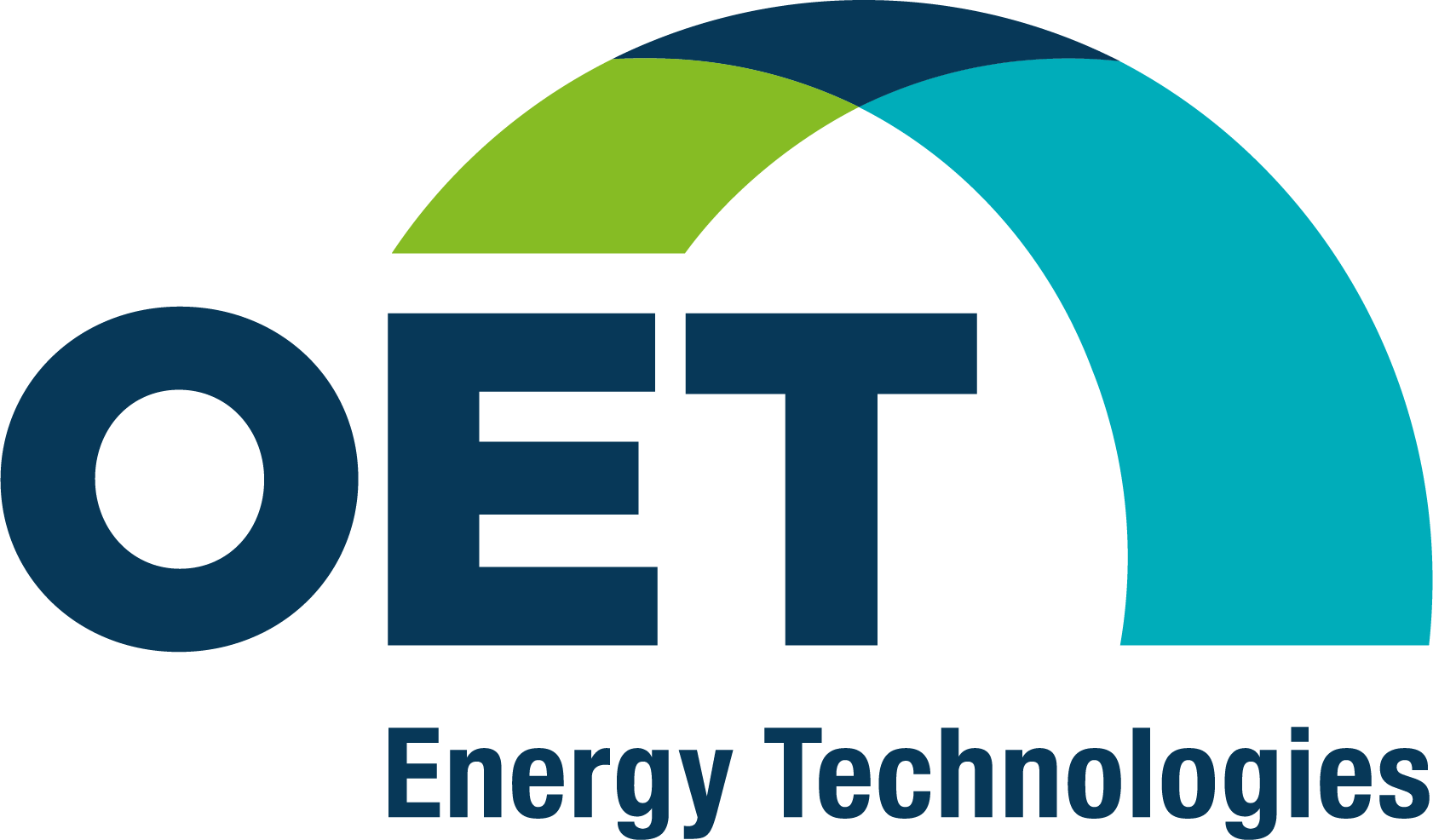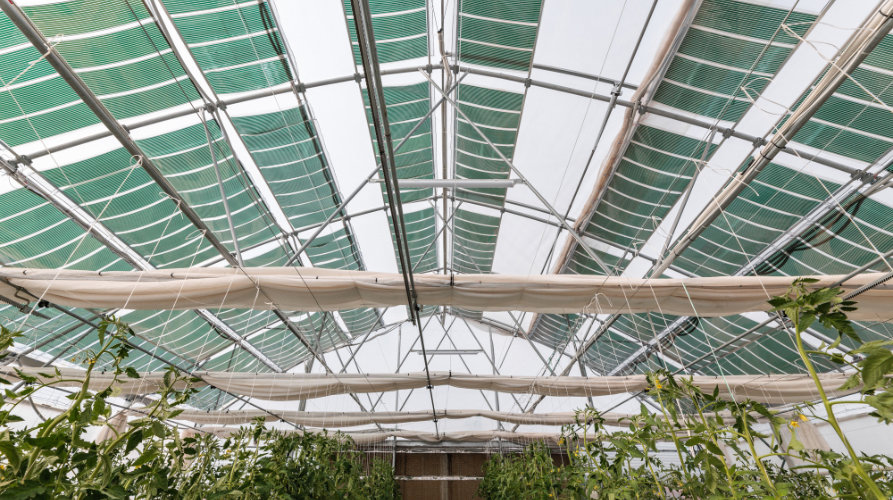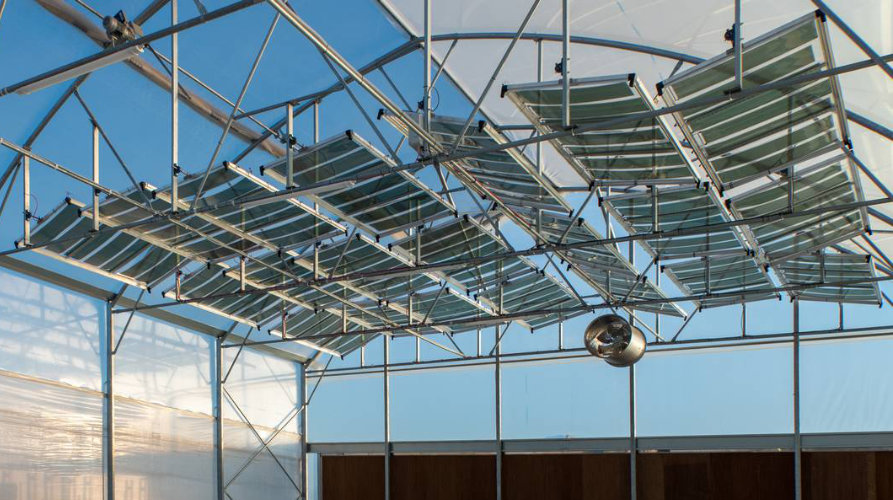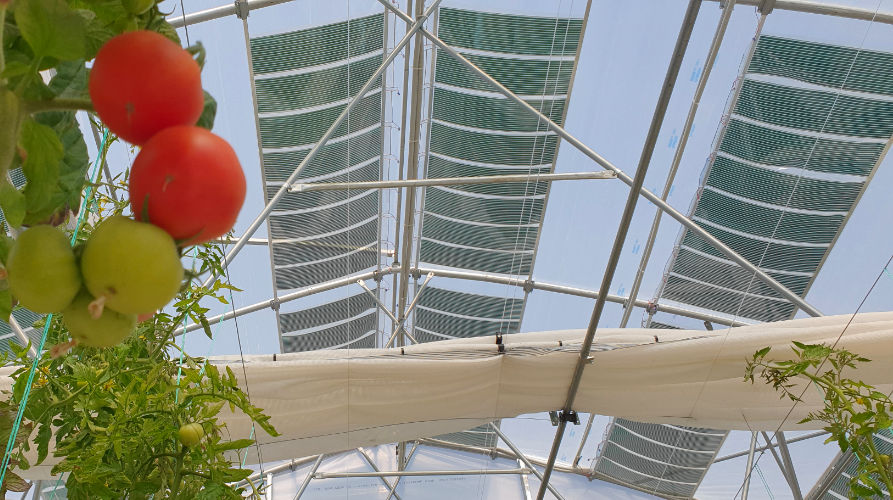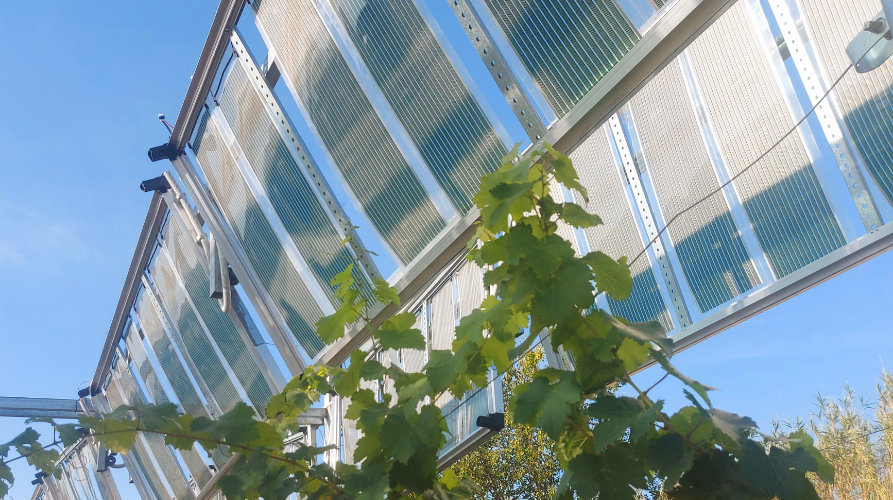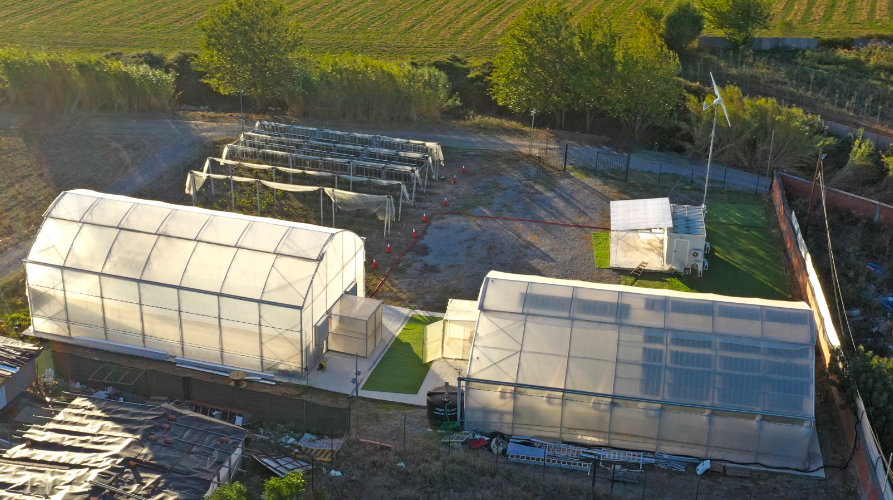Integrated Energy and Cultivation with Semi-Transparent Organic Photovoltaics
OET applies advanced semi-transparent ΟPVs to both greenhouse structures and open-field cultivation systems, enabling the triple—use of agricultural land for food production, clean energy generation, and efficient resource use.
Triple Land Use Model
OET’s agrivoltaic systems are designed to maximize land productivity by simultaneously enabling:
1. Agricultural production (e.g. crops, vegetables, fruit trees),
2. Photovoltaic energy generation, and
3. Climate optimization (cooling, shading), and water and energy conservation.
This Triple Land Use model supports a significant increase in overall land value and utility. Field results indicate up to 30% increase in crop yields due to improved microclimate regulation (temperature, light, humidity) under OPV installations.
Light Management with 100% Tunable Light Transmission
OET’s OPV modules are engineered for adjustable light transmission, with transparency levels ranging from close to 30% up to 100%, depending on the crop type, region, and season. This is achieved through tilting mechanisms, panel layout design, and material transparency tuning, allowing:
•Optimal Photosynthetically Active Radiation (PAR) for plant growth
•Reduction of thermal stress on plants
•Shading flexibility without compromising energy output
This agronomic-photovoltaic balance enables efficient use of solar energy while maintaining photosynthetic efficiency.
– Environmental and Operational Benefits
•Water Efficiency: Reduction of irrigation needs by up to 30% due to decreased evapotranspiration.
•Lower Cooling Demand: Natural shading properties reduce the need for artificial cooling in greenhouses.
•Infrastructure Integration: OPVs can be embedded bebeath plastic or glass greenhouse covers, or vertical farm structures without altering existing cultivation workflows.
•Energy Autonomy: On-site clean energy generation powers irrigation, climate control, and processing equipment, reducing operational costs.
OET’s agrivoltaic solutions offer a scalable, sustainable, and economically viable model for modern agriculture, tailored to support energy-positive farms, resource efficiency, and climate-resilient food systems.
